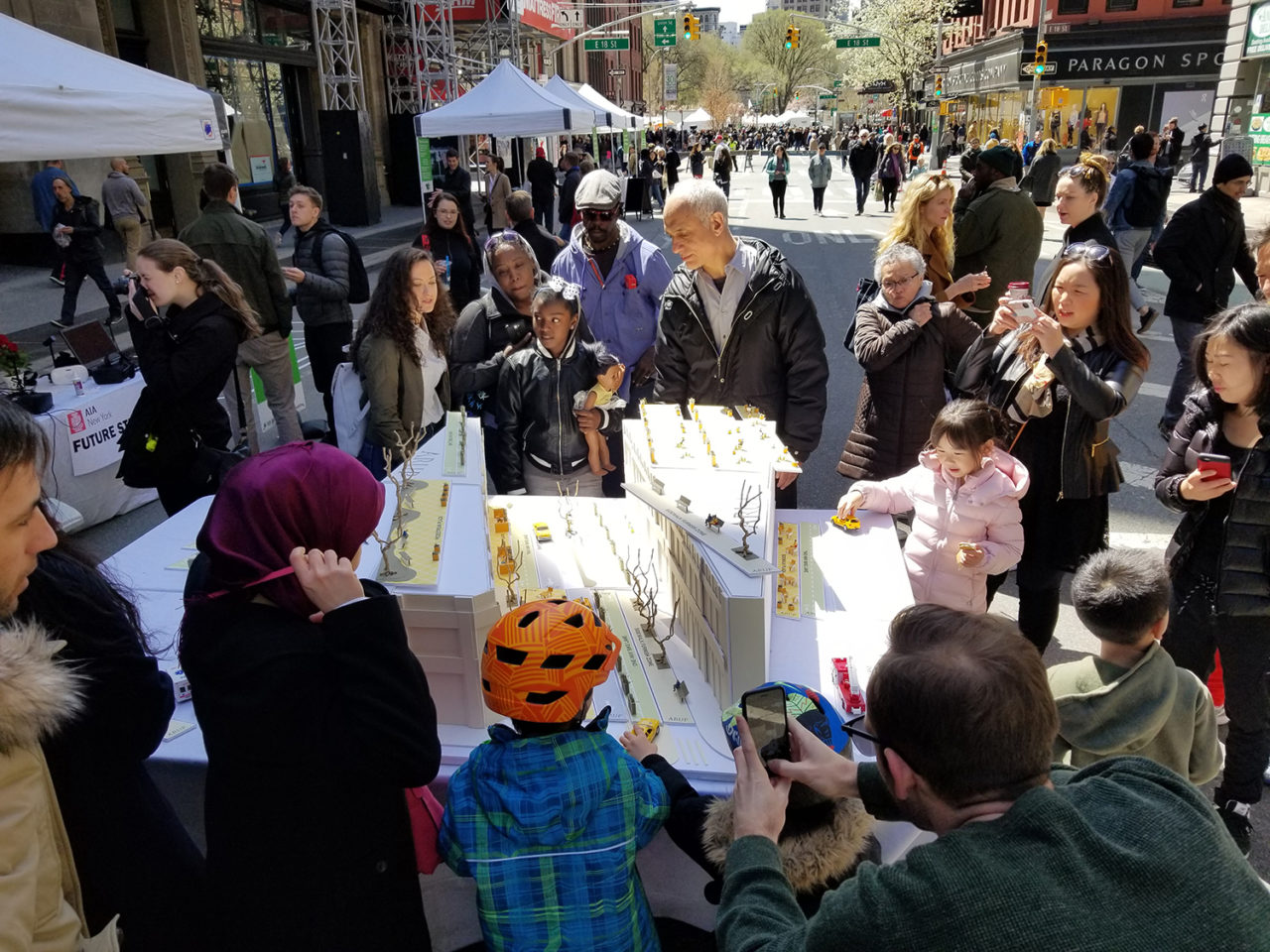by: Luciana Godinho
On Saturday, April 21, the AIANY Planning & Urban Design Committee (PUD) launched a public workshop as part of the NYC Department of Transportation’s Car Free Earth Day. The annual event, spearheaded by Ydanis Rodrigues, Chair of City Council’s Committee on Transportation, closed Broadway to all vehicular traffic between Union Square and Times Square, as well as in Upper Manhattan, to promote a series of discussions, demonstrations, and activities about cities and sustainability. PUD’s demonstration area between 18th and 19th streets, Future Streets Launchpad, used a range of presentations to engage the public in discussions about how our streets today privilege the private automobile, and explored the possibility of new, more efficient, valuable, and equitable uses for this public land. The launchpad engaged the public with three exciting experiences: an interactive physical model, virtual reality immersions, and a series of display boards.
Positioned in the middle of the street, the physical model, constructed by ARUP and students from the Urban Design program at the New York Institute of Technology, was the huge hit. With a set of colored lanes, toy cars, miniature people, and furniture, the model attracted children, their parents, and curious pedestrians to play. It allowed members of the public to try out different configurations of space on Broadway by mixing and matching lane types, program types, and the relative positions of these elements on the street. By providing a playful experience for the audience, the activity catalyzed many enriching discussions about the future, not only of Broadway, but of streetscapes in NYC and around the world.
The virtual reality stations offered visitors a chance to immerse themselves in a possible future street environment for that very block. It showed much more green space, a safer protected bike lane, and proposed different, more congregational uses for sidewalks. People were impressed by how small changes could provide a much higher-quality ambiance on the street.
The display boards highlighted a variety of ongoing investigations into the future of NYC streetscapes. These works advocate for a more pedestrian-friendly, mobility-centric, equitable, and safe use of the streets. Represented project work included Dedicate Our Streets from Arup, Public Square by FXCollaborative, Driverless NYC by KPF, and The Green Line by Perkins Eastman. The last of these envisions transforming this area of Broadway into a permanently pedestrian-prioritized space.
Future Streets has plans to continue developing these discussions and more with a roundtable or panel discussion in the Fall.










